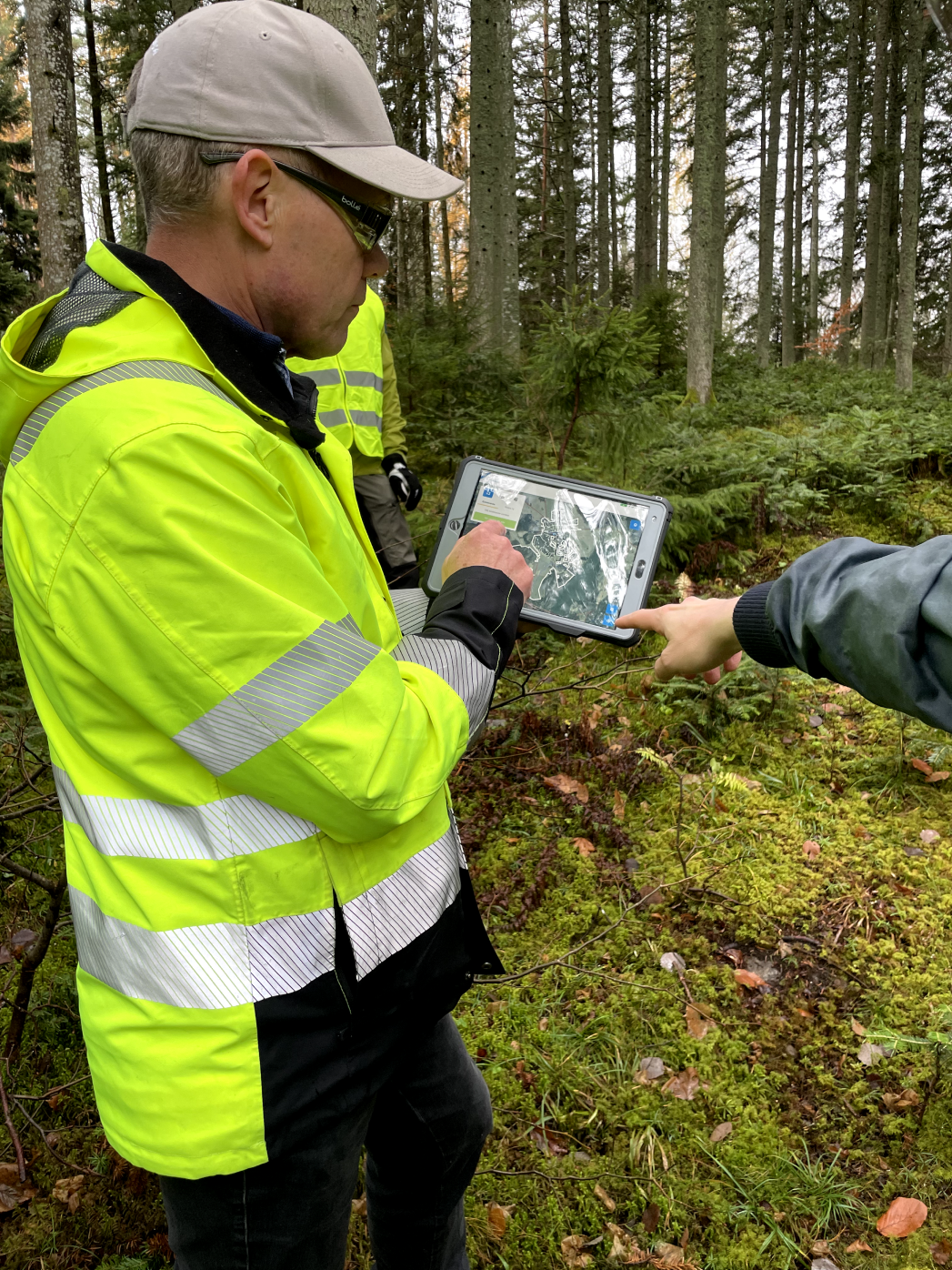Stora Enso: The wood purchasing app
In the heart of Swedish industry and ecology, forest purchasers play a pivotal role. Governed by national regulations and influenced by EU directives aimed at preserving certain species, these professionals are tasked with managing forests diligently. This involves creating detailed contracts for activities such as cutting, thinning, and general property maintenance. However, the existing tools at their disposal have become outdated and cumbersome, leading to inefficiencies in contract creation and forest management. The goal of our project was to revolutionize this process, making it more efficient for wood purchasers to draft contracts, further digitalize the contract creation process, and enable these professionals to utilize their time more effectively with superior tools.
Team
1x Project lead | 1x UI/UX designer (me) | 3x Back-end dev | 1x Front-end dev
My role
As the sole Product Designer, I planned and conducted research, guided design exploration and collaborated with stakeholders and developers globally. I also worked with Stora Enso's internal design team to enhance their design system for a cohesive language across digital products and alignment with company vision and goals.

Identifying a Problem Worth Solving
Our journey began with acknowledging what turned out early on to be the glaring issue: forest purchasers were burdened by an outdated system known as VSOP.
Characterized by its challenging navigation, visually unappealing interface, lack of user guidance, and overly complex instructions for drafting a single contract, VSOP starkly highlighted the necessity for modernization. It was evident that this tool, stagnant for over a decade, failed to integrate new technological advancements, signaling a ripe opportunity for innovation.
User Research
To ensure our solution was grounded in real user needs, we embarked on a comprehensive user research phase. This included:
- Interviews with Forest Owners
Direct conversations provided insights into their experiences and frustrations with the current system.
- Initial Workshop with a Focus Group:
Engaging with a group of users helped us gather diverse perspectives and requirements.
- Stakeholder Interviews:
Discussions with key stakeholders, such as business representatives, offered an understanding of business and operational constraints.
Through synthesizing and analyzing our findings, we identified crucial user needs, pain points, and desired features. This analysis laid the groundwork for developing a targeted feature set for the new solution.
We conducted a deep dive into the existing VSOP system to deconstruct its functionality and identify its shortcomings. By spending substantial time with forest purchasers, we gained a thorough understanding of their daily challenges, forestry terminology, and essential versus nice-to-have features.
Sketching, Testing, Validating, and Iterating
Continual testing with our focus group was pivotal. It involved presenting prototypes to forest owners and engaging them in the contract creation process to elicit feedback on missing features or necessary adjustments. Field visits with purchasers provided invaluable insights into the practical application of our prototypes in real-world scenarios.


Early explorations

Testing in context
High fidelity prototyping
Feedback from testing phases informed the iterative refinement of our prototypes, culminating in fully clickable versions that showcased the app's functionality. This iterative approach ensured that the final product truly resonated with user needs and expectations.

Implementation and Scaling for MVP
The transition from prototype to minimum viable product (MVP) involved close collaboration with the development team. My role was to bridge the gap between design and development, ensuring that the app not only met technical specifications but also embodied the intended user experience. By prioritizing features based on importance and integrating essential tools like GPS mapping, we crafted a scalable MVP that could evolve alongside user feedback and technological advancements.
Conclusion
This case study exemplifies the power of user-centered design in addressing and solving industry-specific challenges. Through meticulous research, iterative design, and collaborative development, we were able to deliver a digital solution that significantly improves the efficiency of wood purchasing processes. This project not only represents a leap forward in digitalizing the forestry industry but also highlights the importance of empathy and innovation in creating impactful user experiences.